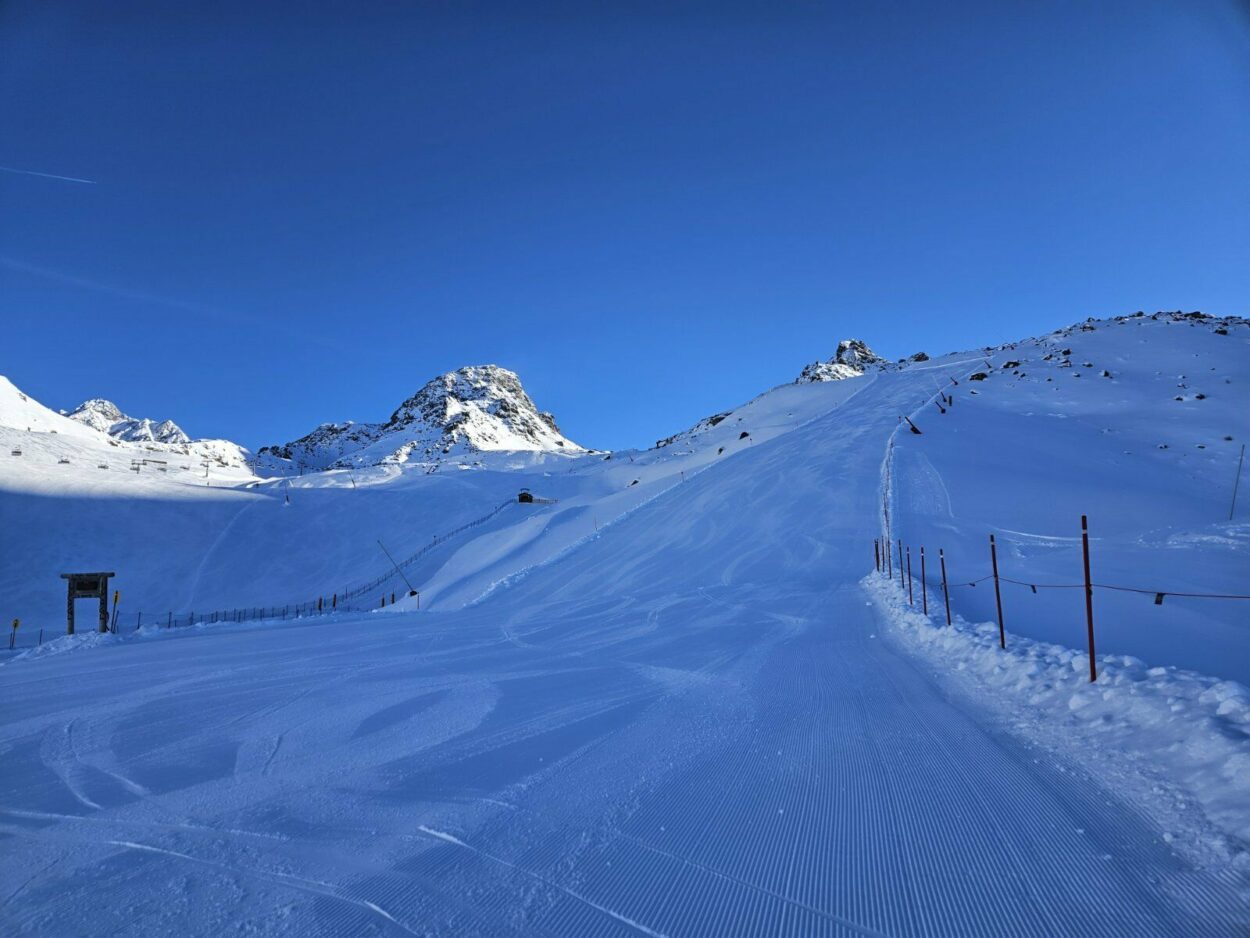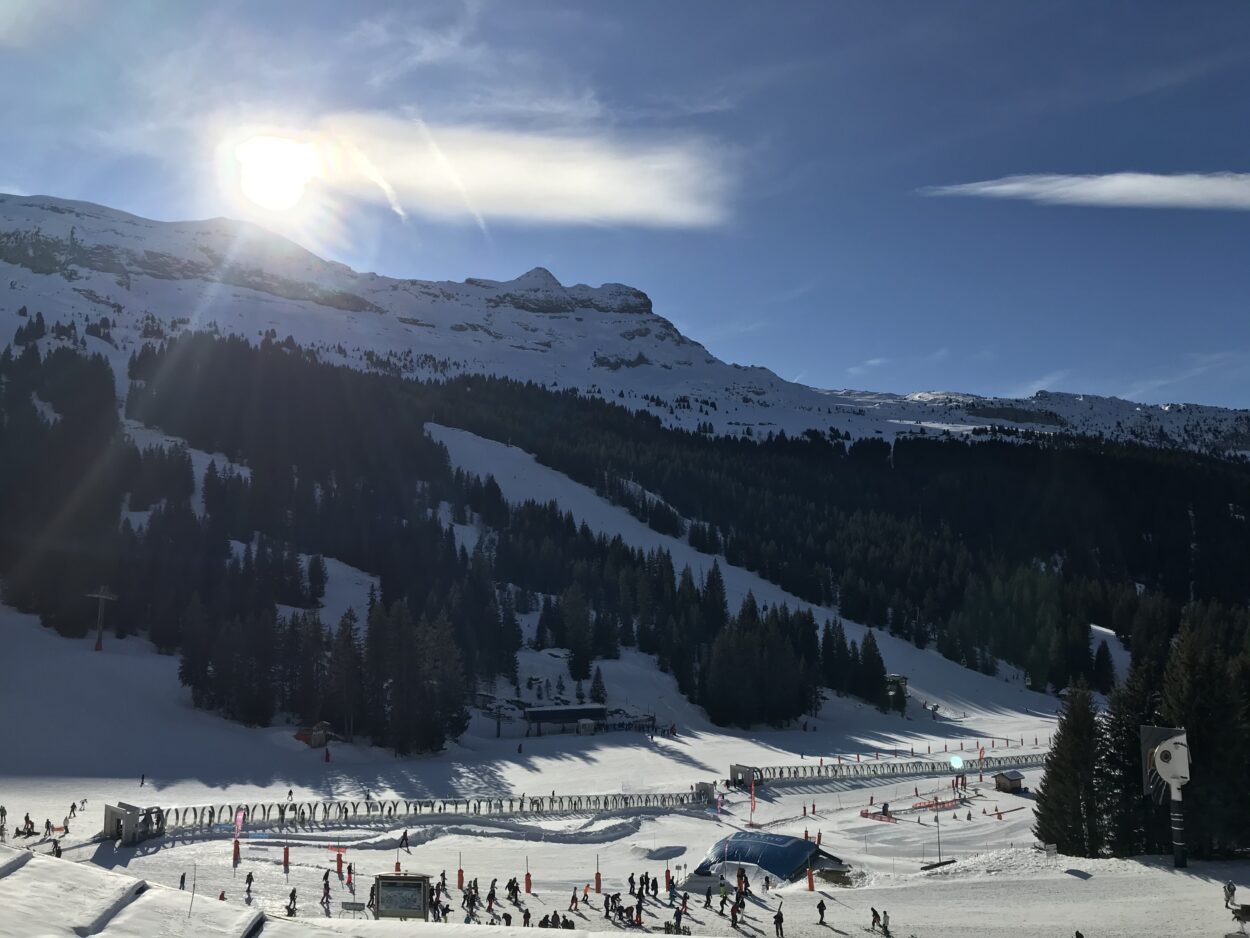Nestled in the embrace of the Paznaun Valley, the Ischgl-Samnaun ski area unfolds as a vast and enchanting winter realm, beckoning skiers of all abilities to embark on an alpine odyssey like no other. As the snow-covered peaks rise majestically to the heavens, the ski area, with an altitude range stretching from 1,377 to 2,872 meters, promises a diverse and thrilling experience against the stunning backdrop of the Austrian Alps.
Tapestry of adventures
The heart of this winter paradise lies in its extensive network of slopes, weaving a tapestry of adventures catering to skiers of all abilities. Boasting over 238 kilometers of slopes catering to all skill levels, Ischgl provides an extensive and diverse skiing terrain. From the gentle caress of beginner-friendly slopes in the Idalp area to the heart-pounding descents from the peaks of Palinkopf and Greitspitze for the advanced, Ischgl-Samnaun invites every skier to carve their unique story into the snow.


The gentle embrace of Idalp
Our journey begins at the Idalp Area, a haven for those taking their initial foray into the world of skiing. As the gondola ascends, revealing panoramic views of snow-clad mountains, beginners find solace on the wide, gentle slopes of “Idjoch” and “Flimjoch.” Here, the snow seems to whisper words of encouragement, inviting novices to carve their first tracks in the pristine powder.
Intermediates’ playground – Pardatschgrat and Fimbatal
For those seeking a blend of challenge and joy, the Pardatschgrat and Fimbatal areas unfold a tapestry of red slopes that weave through the mountainous landscape. As skiers traverse the undulating terrain, the rhythmic dance between the snow and their skis becomes an art form. The “Eleven” and “Zeil” runs stand as testaments to the exhilarating possibilities that await intermediate skiers, providing a canvas for skillful maneuvers against the breathtaking Alpine backdrop.
The thrill of the summit – Palinkopf and Greitspitze
As our journey ascends to loftier heights, the Palinkopf and Greitspitze beckon advanced skiers with their steep and challenging black slopes. These peaks, shrouded in a veil of snow-laden conifers, offer a formidable playground for those seeking an adrenaline rush. The infamous “Swiss Wall” on the Swiss side presents a descent that challenges even the most seasoned skiers, a precipitous descent that demands skill, focus, and an adventurous spirit.
The heart-stopping Black Scorpion slope
At the pinnacle of Ischgl’s skiing experience is the infamous “Black Scorpion” slope. This run is not for the faint-hearted. Steep, with a gradient that challenges even the most seasoned skiers, it offers an adrenaline rush like no other. The Black Scorpion is a test of skill, courage, and endurance, surrounded by the stunning backdrop of snow-clad peaks.
The picturesque Panorama Paradise trail
For those who seek a more scenic journey, the “Panorama Paradise” trail is a must-ski. As the name suggests, this trail offers unrivaled panoramic views of the Austrian Alps. Glide through paths lined with ancient pines, over gentle undulations, and experience the serenity of the mountains in all their winter glory.


Bridging Borders
A unique chapter in our narrative unfolds as skiers venture into the famed “Duty-Free Run,” the clandestine passage connecting Ischgl to the Swiss resort of Samnaun. The snow-laden trail, winding its way through picturesque landscapes, serves as both a conduit between nations and a thrilling downhill adventure. As skiers gracefully navigate the border, they are rewarded not only with breathtaking scenery but also the promise of duty-free treasures awaiting in Samnaun.
Season-long skiing
Ischgl’s high-altitude location, ranging from 1,377 to 2,872 meters, contributes to its reputation as a snow-sure destination. The resort typically enjoys a longer ski season.
Ischgl’s snow sureness extends the skiing season, often starting in late November and continuing through early May. This extended window of snow cover provides skiers with the luxury of indulging in their passion for an extended period, making Ischgl a destination that truly embraces the essence of winter sports.
In conclusion, Ischgl is more than a ski destination; it’s an Alpine symphony, harmonizing with the skill levels and aspirations of every skier. From the gentle caress of Idalp to the heart-pounding descents of Palinkopf, each run and lift becomes a chapter in a story woven against the backdrop of snow-covered peaks, creating memories that linger long after the snow has melted. This resort combines the thrill of skiing with the enchantment of the Alps, making it an unforgettable destination for any ski enthusiast.
Getting there
Navigating your way to Ischgl is an integral part of the adventure, and whether you prefer the convenience of air travel or the scenic journey by train, Ischgl is well-connected for both options.
By Plane:
Travelers have several airport options, each providing a gateway to the enchanting world of Ischgl.
Innsbruck Airport (INN): Situated about 100 kilometers away, a journey of 1.5 to 2 hours awaits you. Shuttle services, taxis, or rental cars are readily available for the onward trip.
Navigating your way to Ischgl is an integral part of the adventure, and whether you prefer the convenience of air travel or the scenic journey by train, Ischgl is well-connected for both options.
By Train:
For those who appreciate the journey as much as the destination, Ischgl is accessible by train.
Landeck Train Station: The hub that connects major cities like Innsbruck, Zurich, or Munich to Ischgl. Upon arrival, choose from buses, taxis, or rental cars for the final leg of the journey to Ischgl.
Combination of Plane and Train:
For a harmonious blend of air and rail travel, consider flying into a nearby airport (e.g., Innsbruck) and then taking a train to Landeck. From Landeck, you have the flexibility to continue your journey to Ischgl via bus, taxi, or rental car.

